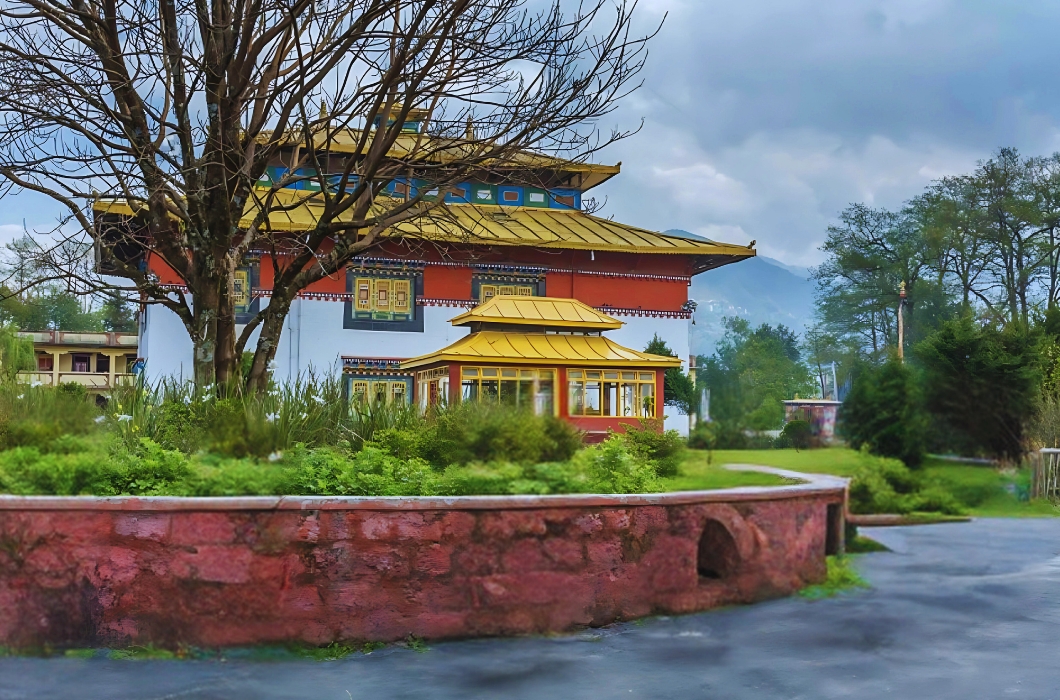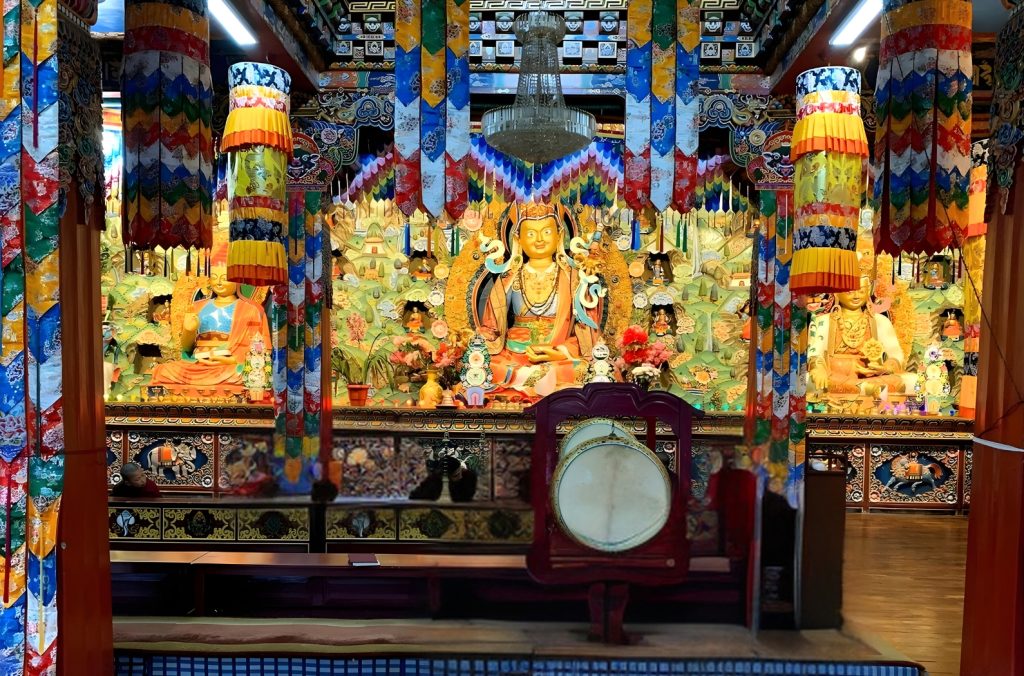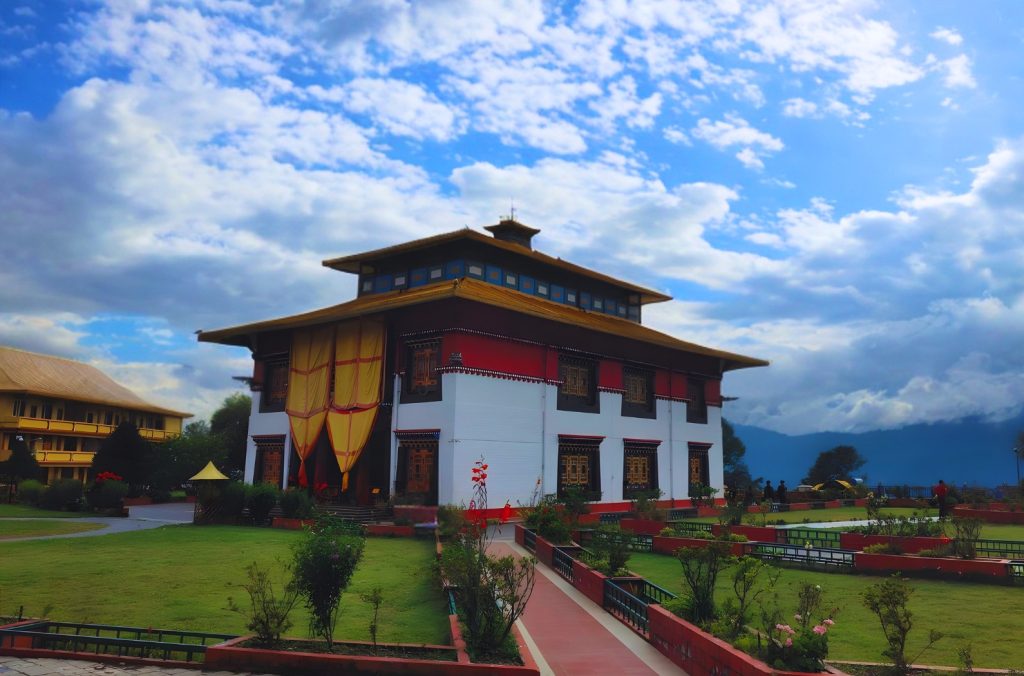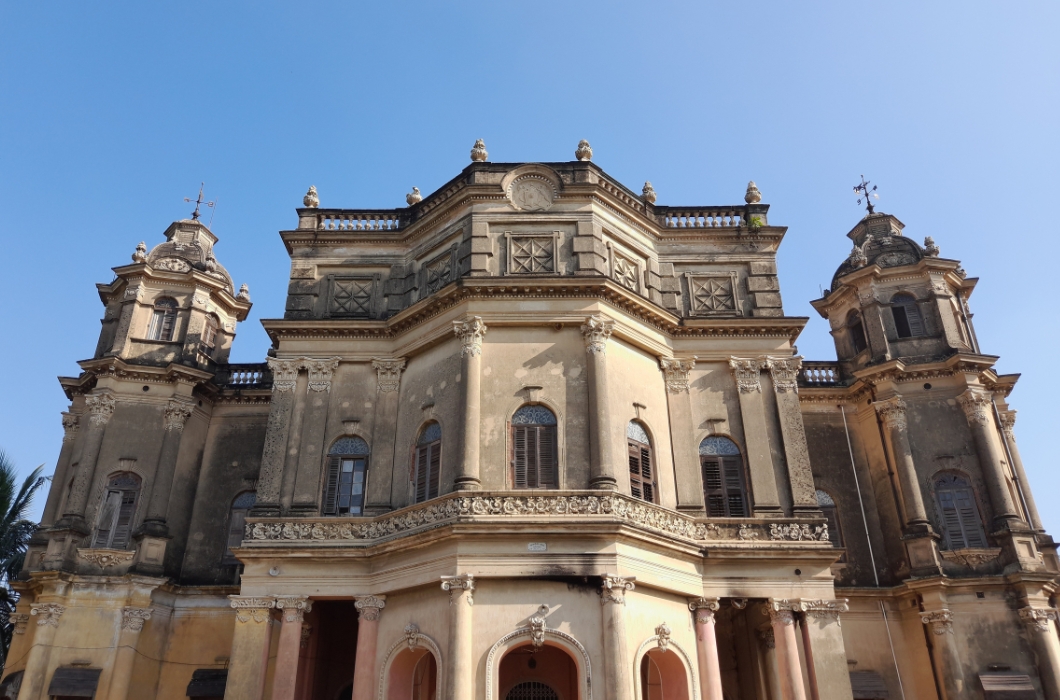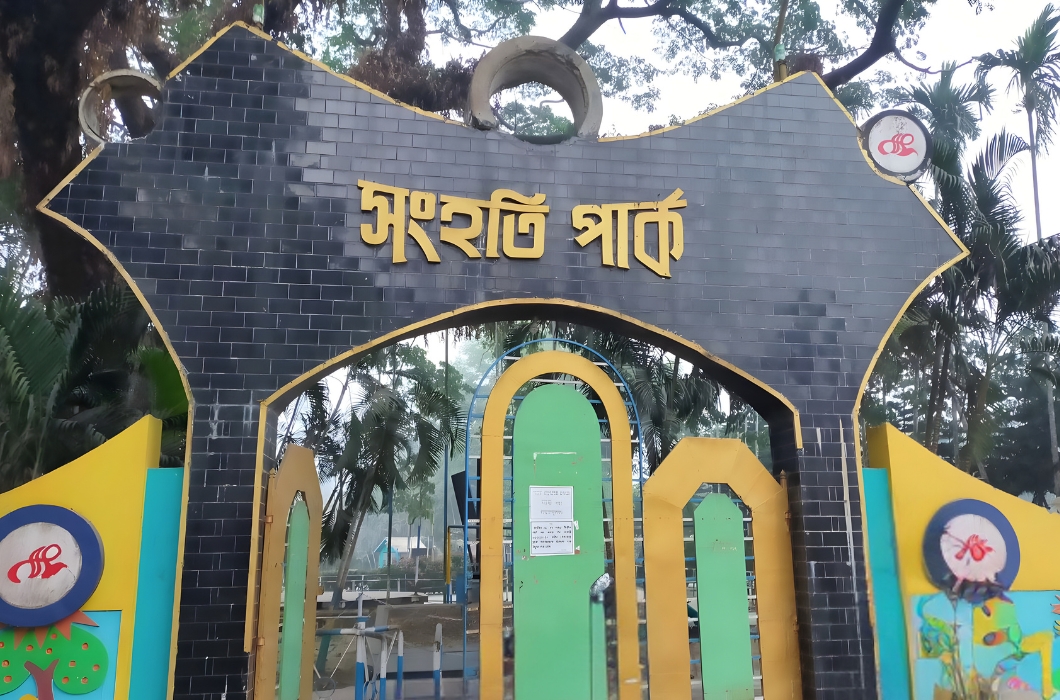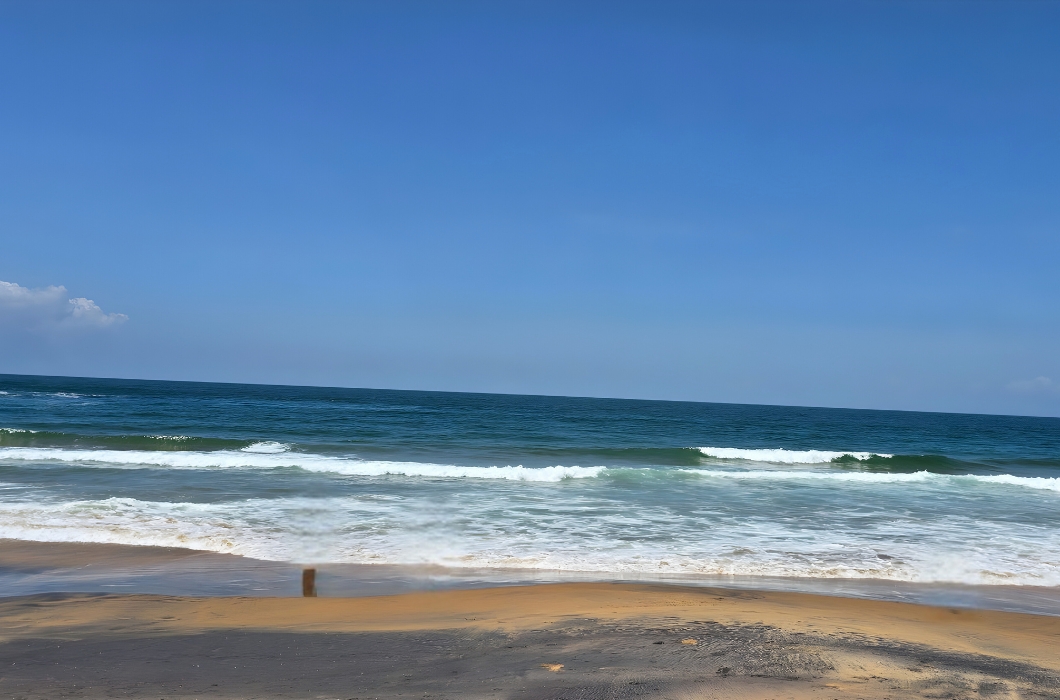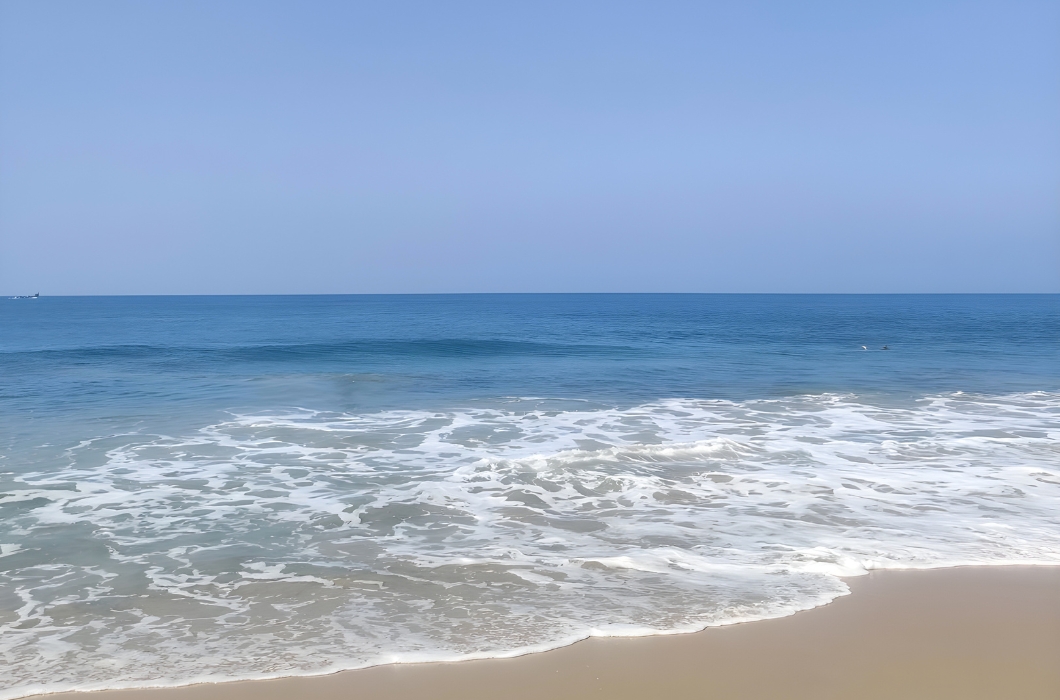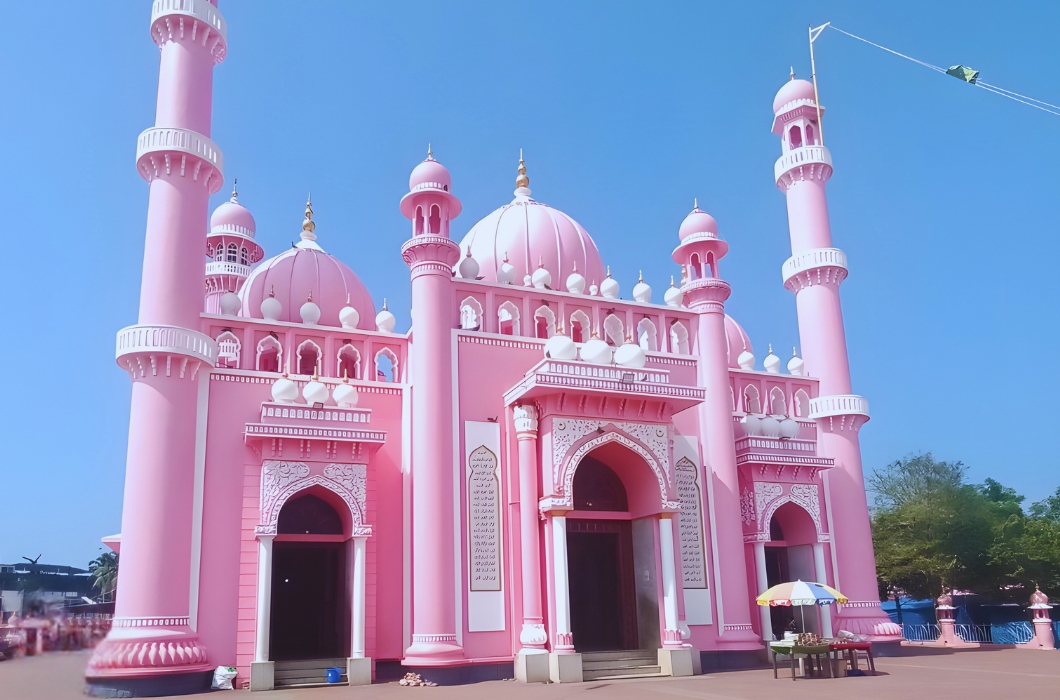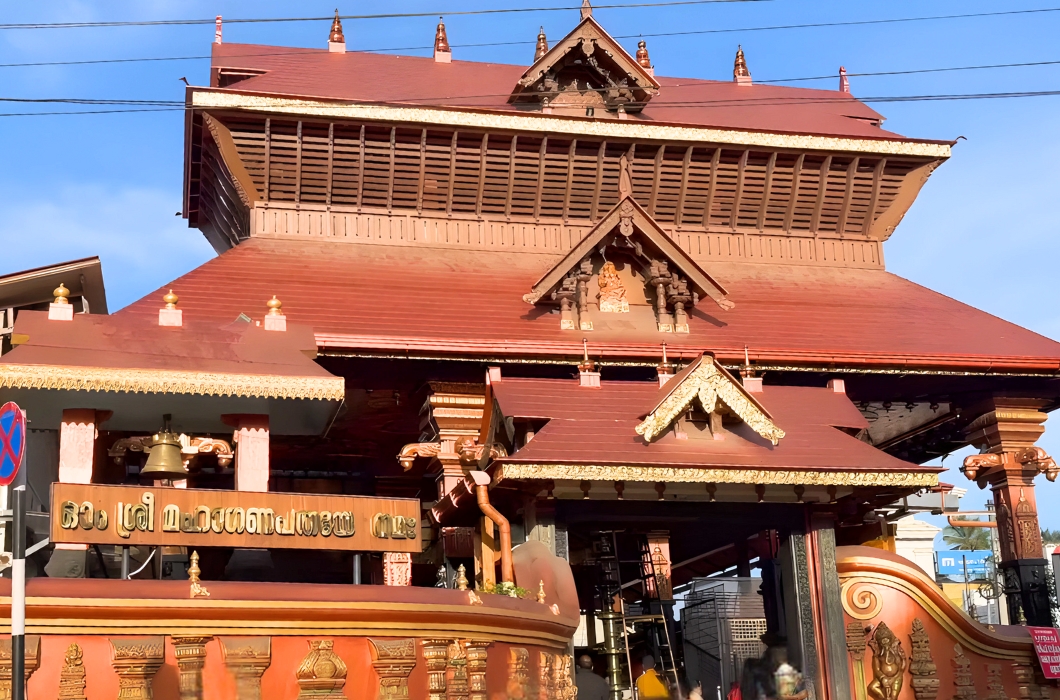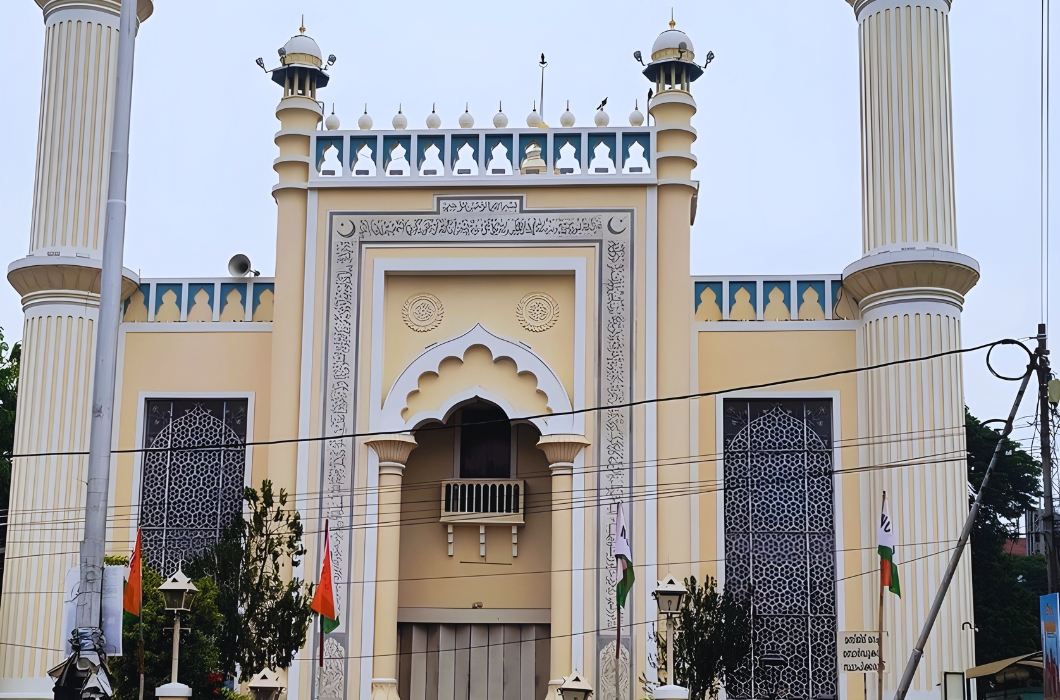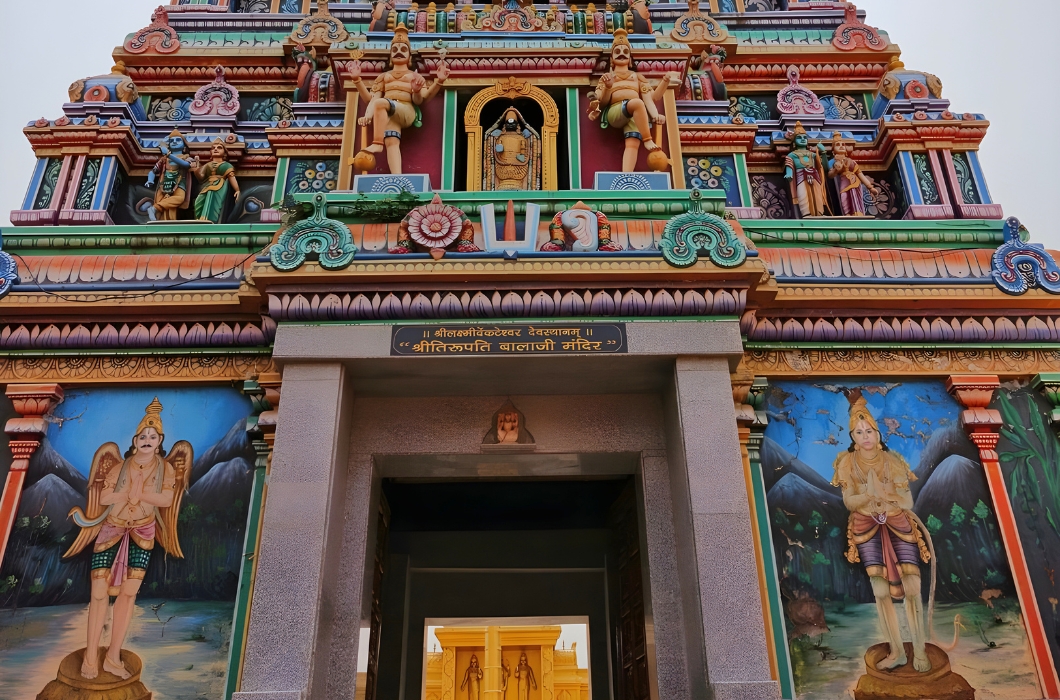Tsuk La Khang, also known as Tsuglakhang Monastery, is a Buddhist palace monastery in Gangtok that is three kilometers from the Gangtok SNT Bus Station. One of the most important sites of worship in Gangtok and one of the greatest tourist destinations in Gangtok is the Palace Monastery, as it is also called. Tsuk La Khang is the imperial gompa of the former Sikkim Royal family, and it is situated within the Royal Palace complex. This monastery was most likely constructed in 1898 AD, under the reign of Thutob Namgyal, the ninth king. In the past, the monastery served as the location for a number of events, including marriages and the coronation of Sikkim royalty.
Situated close to the ridge, this is currently Gangtok’s primary Buddhist assembly and site of devotion. The two-story Royal Chapel of the Chogyals features an assembly hall in the middle and was constructed in the manner of traditional Sikkim architecture. It has a remarkable library of Buddhist texts and writings. The murals and pictures of Buddha, Bodhisattva, and other tantric deities adorn the walls and altars of the monastery in an opulent fashion. The monastery is replete with wooden statues of Snow Lion’s Heads. Throughout the year, the monastery also holds numerous festivities. Here, there is a strong celebration of Buddhist holidays like Phang Lhabsol and Losoong (Tibetan New Year). The monastery’s monks perform “Chaam,” or mask dance, during these celebrations. In addition, the Black Hat Dance is performed at the New Year’s celebration. The victory of good forces over evil forces is shown in this dance.
Share On Social:
Facebook
Twitter
Pinterest
WhatsApp

